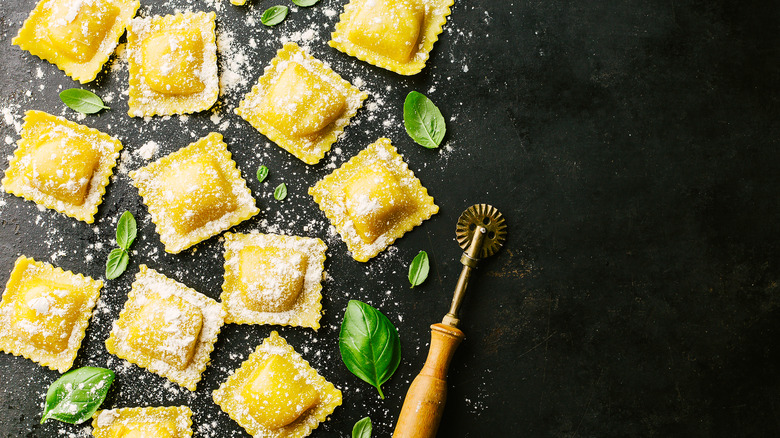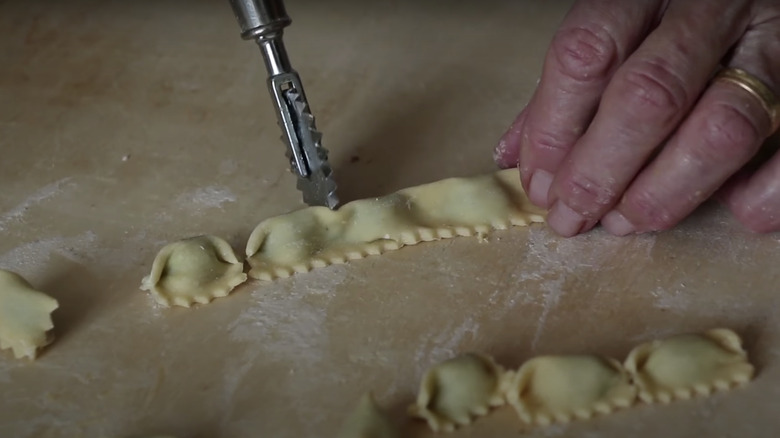The Folding Technique That Sets Agnolotti And Ravioli Apart
Ah, pasta. Without your existence in the world, we'd miss out on such dishes as spicy penne arrabbiata, delightful spaghetti carbonara, creamy cacio e pepe, and, well, about a million more delights. As infinitely adaptable and exceedingly delicious as pasta is, it's no wonder the average American forks up an average of 20 pounds of it per year, according to the National Pasta Association's website Share the Pasta.
And as fun as long strands and short shapes can be, there's just something extra delicious about filled pastas. You know the ones: tortellini, cappelletti, ravioli, and the like (via Food Republic). That last one, ravioli, just might be the best-known stuffed pasta, boasting such fillings as ricotta cheese, runny egg yolks, and creamy butternut squash.
If you know ravioli, you might have also heard of agnolotti, another stuffed pasta commonly spotted on Italian restaurant menus. And even if you've eaten both of these filled pastas, you might not be aware that a specific folding technique sets the two similar pastas apart.
Agnolotti is folded over only once
A labor-intensive project that involves making fresh pasta, kneading it, cutting it into pieces, and passing it through a pasta maker to make sheets (via Inside the Rustic Kitchen), homemade ravioli are then finished by mounding one pasta sheet with filling, placing another sheet over it, pressing down around the filling, and then cutting out each raviolo with a pasta wheel or a ravioli stamp.
There's little doubt the end result is worth it, but if you love filled pastas and want to try your hand at one that's easier to make, you might look up a recipe for agnolotti. According to CHEFIN, the pasta is somewhat simpler to create than ravioli because instead of using two pasta sheets, it uses just one, which is dolloped with filling in a similar way and then simply folded over the filling to close the pasta.
To seal and cut the pasta once it's folded over, the same pasta wheel is used to cut the agnolotti into individual pastas. But before that happens, as seen in this Pasta Grannies video, a pinch is created along the top seam of the rope of pasta. As each agnolotto is cut it will then have two sauce-snagging features: its wheel-cut edge, as well as a little pocket on either side of the cut pasta created by quickly cutting through the "plin," or pinch. Homemade agnolotti stuffed with wine-stewed meat and sauced in beef broth and butter? Sign us up, please.

